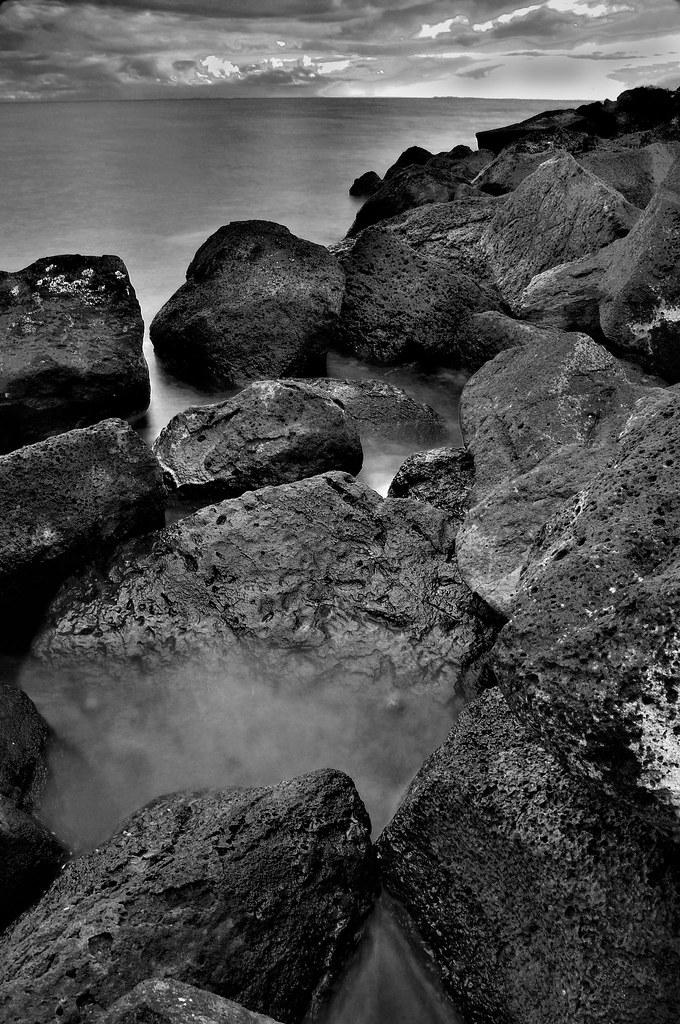Sometimes, we want it slow. Especially with moving water. Water at unrest exposed to slow shutter speed, morphs into silky shroud spanning the defined space. Or so it seems. How slow is slow then? It depends on the speed of the water itself. But often, a couple of seconds minimum is required.
A few seconds exposure isn't hard to get at night. However, if it is in bright daylight, the lens and the ISO simply cannot be stopped down (narrowest aperture & lowest ISO) enough. In this shot in Williamstown under overcast afternoon light, after stopping down to the lowest, a proper exposure still demanded speeds lower than 1s. The last recourse was a gray *ND (neutral density) filter. Here an ND8 filter was used, meaning the scene was darkened 8 times (3 stops). Voila, there came a 5s exposure!
Another deal breaker was the sky. The afternoon overcast sky was still a lot brighter than the gray rocks. Exposed to the sky, the rocks are totally dark; exposed to the rocks, the sky turns white. For those who prefer controlling the photo optically as opposed to digitally (such as HDR), a #GND (graduated neutral density) filter is the one. Place the gray half where the sky is. Now, the sky has been made less bright and we can see the distant clouds.
This is simply an ordinary stack of rocks. But they look interesting upon close inspection. What is more, the silky touch on the water in the little 'pool' among the rocks! Look closely at the nearest rock, and the one after, and the next. They lead you to the faraway sea, which further vanishes into the distant clouds. Nothing should be left behind. So a wide angle of 18mm (~27mm in film mode) was used.
Location: Williamstown, Melbourne, Australia
Camera: Nikon D300
Lens: Nikkor 18-200mm f/3.5-5.6 VR
ISO: 100
Exposure: 5s
Aperture: f/22
Focal Length: 18mm
Filter: ND8, GND8
Flash: No
Tripod: Yes
------------------------------------------------------------------
*ND - a piece of glass (or whatever transparent material it is made of) but with added gray to block the amount of light reaching the lens. In other words, a gray ND simply darkens the scene.
#GND - a clear piece of glass with its one physical half turned into ND, i.e. half clear and half gray.


No comments:
Post a Comment